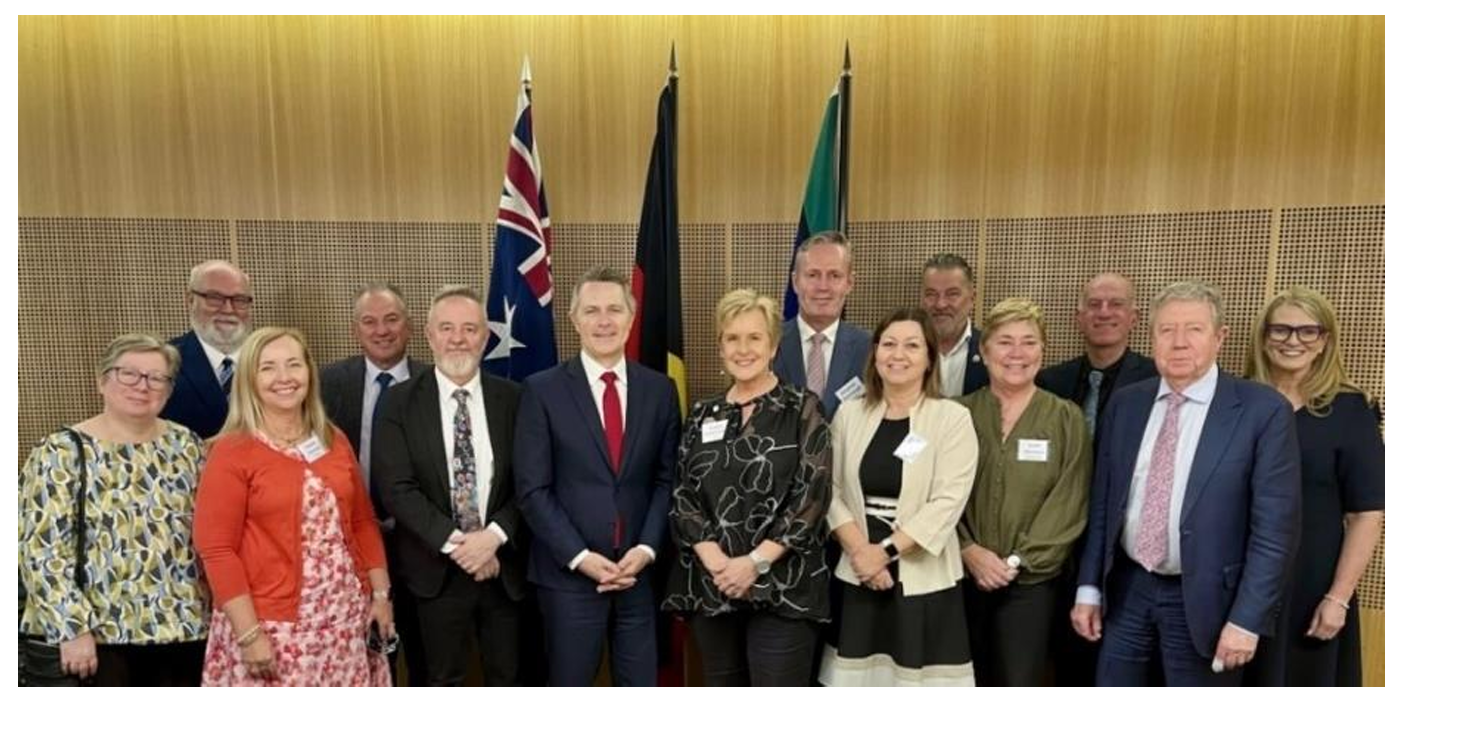Action needed to improve the safety and wellbeing of principals
The IEU is calling for urgent action to protect school leaders following the latest Australian Principal Occupational Health, Safety and Wellbeing Survey, which highlights rising stress, violence, and threats against principals.
Kylie Busk, Deputy Secretary of IEU Victoria Tasmania, said: "We urge the government and employers to take decisive action in addressing heavy workloads—the leading cause of stress for school leaders. Prolonged exposure to intense work-related stress and competing demands places school leaders at higher risk than many other workers, so employers must do more to assess and address the multiple hazards involved in their role.
“And while society must confront the unacceptable risks being endured by educators, we must treat this as an occupational health and safety issue. Practical measures can and must be taken immediately."
Busk stressed the importance of maintaining federal support for the National Principal Reference Group (NPRG), established after last year’s survey. This advisory body includes principals from government, Catholic, and independent schools and provides critical feedback on education policies that affect school leaders. The IEU believes that collaborative forums like this are essential for principals and employers across all schools to share best practices and work toward effective solutions.
Associate Professor Paul Kidson, a former school principal and an Educational Leadership scholar at Australian Catholic University, which conducts the survey, described the NPRG as an “outstanding success”. Speaking to ABC News, Kidson said that whoever forms government after the upcoming election “will need to have a resolvable commitment to this cause as many principals feel we've finally started moving in the right direction, and we can't afford to lose that momentum."
National Principals Reference Group, November 2024.
Busk suggested that Victorian and Tasmanian independent schools could look to the Victorian School Community Safety Orders in government schools as a model for safeguarding school staff and students from harmful or abusive behaviour. These orders give principals the authority to act against individuals who threaten school safety and provide a crucial tool for school leaders faced with a threat to school safety.
Busk warned of a looming leadership crisis if action is not taken. “In recent years, this survey has brought frightening insights about violence and stress endured by principals. We already see that Principal vacancy rates have risen and the next generation of potential school leaders are questioning whether they are prepared to take on a role that put them at risk in this way. This wellbeing of principals must be prioritised, or we risk a leadership vacuum developing in schools as experienced and dedicated principals choose to leave the sector.”
Despite these challenges, she noted the resilience and commitment of school leaders, citing the survey’s findings: “… despite the spike in violence and the toll on mental health and wellbeing, the survey found school leaders showed surprisingly high levels of job satisfaction, and their work commitment remained high.”
Busk says she’s reminded every day of “the amazing work done by IEU members working in schools”.
“It’s an amazing testament to their commitment but more must be done to support this work.”
Brad Hayes, Federal Secretary of the IEU, emphasized that while school employers hold the main responsibility for reducing workload, government intervention is also essential. He called on the next federal government to support “the deep and widespread reform program needed in schools”.
The IEUA recommends:
The federal government should reduce excessive administrative burdens by streamlining compliance requirements and holding school employers accountable for meaningful change.
Work impact assessments should be expanded to all areas of education policy to prevent ever-increasing workloads.
The survey recommends:
Addressing heavy workloads by increasing school leader autonomy, resources, and support.
Prioritising wellbeing initiatives for principals.
Exploring alternative leadership models, such as co-principalship.
Implementing protections like the Victorian School Community Safety Order to combat inappropriate behaviour from parents and caregivers.
The Reality: Increasing Threats and Violence
The survey’s findings paint a troubling picture:
50% of the 2,182 school leaders surveyed in 2024 reported experiencing violence.
54.5% were threatened with violence—the highest rate recorded since the survey’s inception in 2011.
Physical violence against school leaders has increased by 81.6% since 2011.
Students were responsible for 80.4% of threats.
Offensive behaviours escalated in 2024, with nearly half (49.6%) of principals experiencing physical violence.
The top five stressors for principals were:
Heavy workloads
Lack of time to focus on teaching and learning
Student-related issues
Staff mental health
Student mental health
According to Dr. Kidson, threats often came from parents and caregivers, who sent hostile emails or appeared at schools to intimidate staff. He also highlighted the rise of cyberbullying, with parents posting “unconscionable things with a sense of impunity”.
With worsening safety conditions and increasing workloads, over half of principals are considering leaving the profession.
Australian Principal Occupational Health, Safety and Wellbeing Survey
The Call to Action
Busk called for strong measures to curb inappropriate behaviour from parents and caregivers, ensuring a safe and respectful environment for school leaders. She emphasised the need for a societal shift: “We must highlight this as a social issue, restoring common decency and respect for educators. All of society must confront the unacceptable health risks faced by educators, especially principals, who are increasingly targeted by aggressive students and parents.”
She also urged school employers to take the crisis seriously: “This behaviour wouldn’t be tolerated in any other profession.”
Busk concluded: “While broader issues must be addressed, the OH&S safety crisis on the ground requires immediate intervention.”



